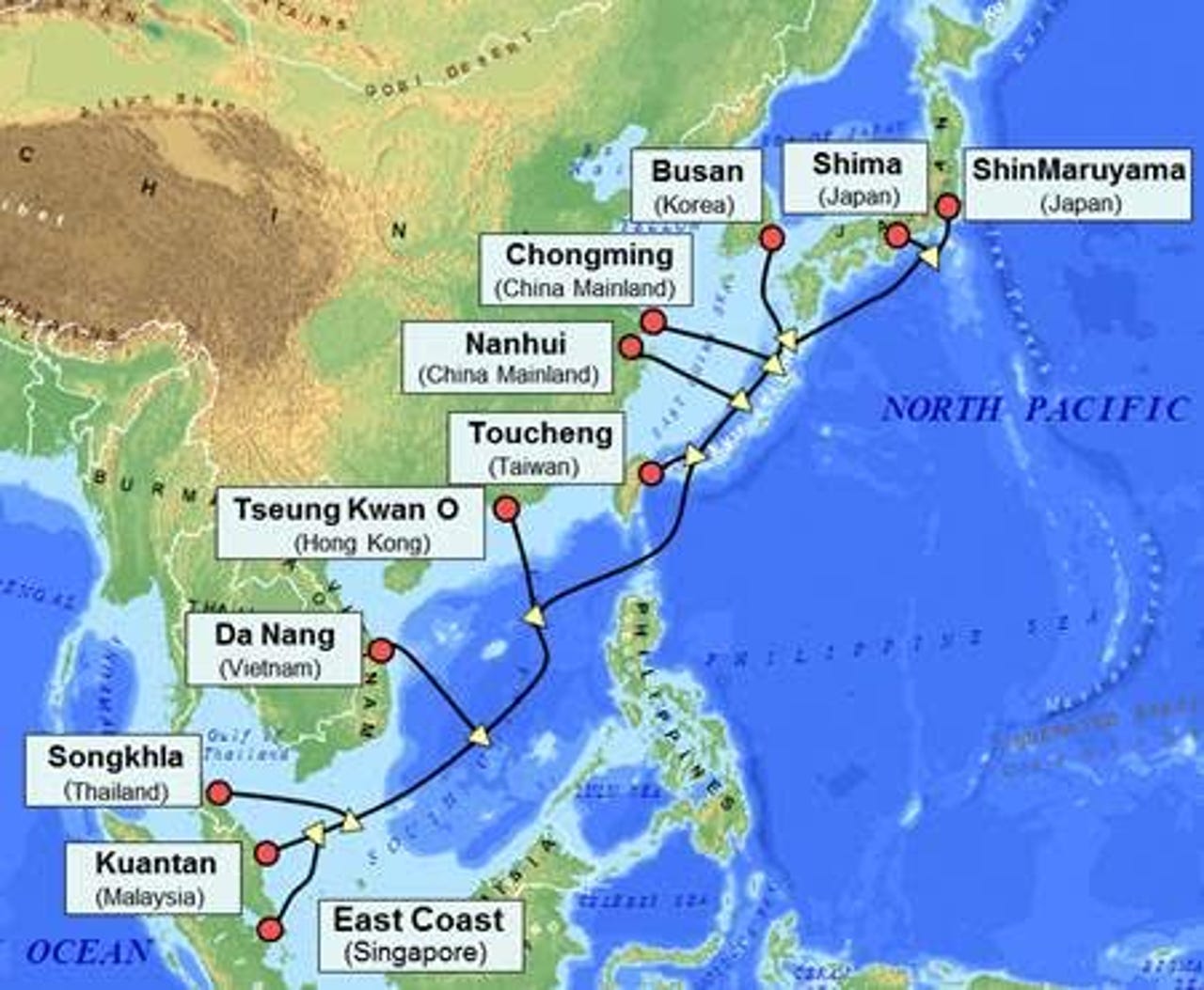Asia-Pacific Gateway 54Tbps subsea cable completes construction

NEC has announced the completion of the Asia-Pacific Gateway (APG) subsea cable between China, Hong Kong, Japan, South Korea, Malaysia, Taiwan, Thailand, Vietnam, and Singapore, which provides capacity of more than 54 terabits per second.
The APG fibre-optic submarine cable -- owned by a consortium of telecommunications carriers including China's China Telecom, China Unicom, and China Mobile; Japan's NTT Communications; South Korea's KT Corporation and LG Uplus; Singapore's StarHub; Taiwan's Chunghwa Telecom; Thailand's CAT; Malaysia's Global Transit Communications; and Vietnam's Viettel and VNPT -- stretches 10,900km across the region.

"NEC is honoured to have been selected as the supplier for APG," Shunichiro Tejima, executive vice president and head of the Telecom Carrier Business Unit at NEC, said.
"We hope to see our partnership with the consortium further enhanced through NEC's ability to provide real-time technical support for the operation and maintenance of this advanced submarine cable."
Latest Australian news
Back in 2012, Facebook also invested an undisclosed amount into the APG in order to "help support our growth in South Asia, making it possible for us to provide a better user experience for a greater number of Facebook users in countries like India, Indonesia, Malaysia, the Philippines, Hong Kong, and Singapore".
Telecommunications carriers and consortiums are racing to build out subsea cable capacity across the Asia-Pacific region, driven by the rapid increase in data usage globally.
Australia's incumbent telco Telstra acquired a 36,000km cable network system connecting China, Japan, Singapore, South Korea, Taiwan, Hong Kong, and the Philippines as part of purchasing Pacnet for $697 million in December 2014, and is also involved in a number of submarine cable projects: In May, it announced the Bay of Bengal Gateway (BBG) 8,000km 100Gbps submarine cable system, made up of three fibre pairs, which will connect Singapore, Malaysia, India, Sri Lanka, Oman, and the United Arab Emirates.
Telstra, Singaporean telco Singtel, and Australian company SubPartners in March also entered a memorandum of understanding (MoU) to construct a high-capacity Perth-to-Singapore subsea cable. The cable, named APX-West, will be 4,500km long, with two fibre pairs providing a minimum of 10Tbps capacity each pair and two-way data transmission, expected to be complete by 2018.
In September, Nextgen and Alcatel-Lucent Submarine Networks activated the $139 million North West Cable System (NWCS), now owned by Vocus Communications, a 2,100km fibre-optic submarine cable between Darwin and Port Headland.
The Australia-Singapore Cable (ASC) project, also acquired by Vocus after originally being a AU$170 million 50-50 joint-venture deal between Vocus and Nextgen, involves constructing a 100Gbps 4,600km subsea cable connecting Perth to Singapore and Indonesia.
The AU$400 million Trident subsea cable, backed by Beijing Construction and Engineering Group with the support of the China Development Bank, will connect the west coast of Australia with Singapore via Indonesia, and is expected to be completed by the second quarter of 2018. It has a bandwidth of 28Tbps utilising 100Gbps coherent dense wavelength division multiplexing (DWDM) technology, which is upgradeable to 400Gbps.
In April, the 14,000km 30Tbps capacity Hawaiki Submarine Cable connecting Australia and New Zealand to Hawaii and the West Coast of the United States also commenced construction, with an expected completion date of mid-2018.
The "FASTER" 10,000km subsea cable system connecting Japan with the west coast of the United States, consisting of six fibre pairs and making use of 10Gbps wave technology, is also being built, as is the Southern Cross Cable Network between California and Sydney.